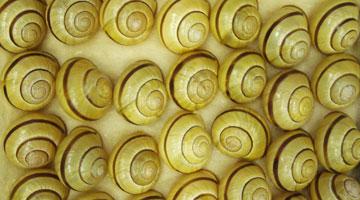
Shells and other invertebrates
A collection of dry preserved shells and spirit preserved invertebrates.
Part of the Natural History collection
Shells
Among the survivors of the 1941 fire that devastated the collections are the collections of Olive Shells and Netted Dog Whelks assembled by F.P. Marrat, who described many species new to science in the 19th century. A small part of the huge H.C. Winckworth British Marine Shell Collection was also saved and is still the major component of the British marine species.
The late Nora Fisher McMillan, a well known conchologist and author of several general books, curated the collection from 1950 until 2000. Through her influence, several conchologists passed their collections to us and we once again have one of the largest regional collections with a good cover of the popular groups.
For further information on Type material in this collection see Mollusca Types in Great Britain and Tanyptera Project (aka North West Invertebrates).
Other invertebrates
The other marine invertebrate collections remain small in number but contain the museum's largest invertebrate in the form of the Giant Spider Crab and its most touched invertebrate in the form of the Giant Clam in the Clore Natural History Centre.
The most important items are the types of sponges from the Argo expedition to the West Indies, collected by Henry Higgins. A few items from the Challenger expedition are also present, though these spirit collections suffered considerably from lack of curation in the 1920s which led to dried-out specimens being destroyed. The collections have good coverage of terrestrial British non-insect arthropods - particularly centipedes, millipedes and woodlice. Fish parasites are represented in the collections of J.C. Chubb.
